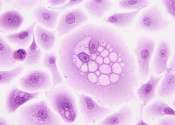How much (DNA) damage can a cancer cell tolerate?
A new study led by Claus M. Azzalin, group leader at Instituto de Medicina Molecular João Lobo Antunes- iMM and published today in the Proceedings of the National Academy of Sciences (PNAS) shows, for the first time, that ...









